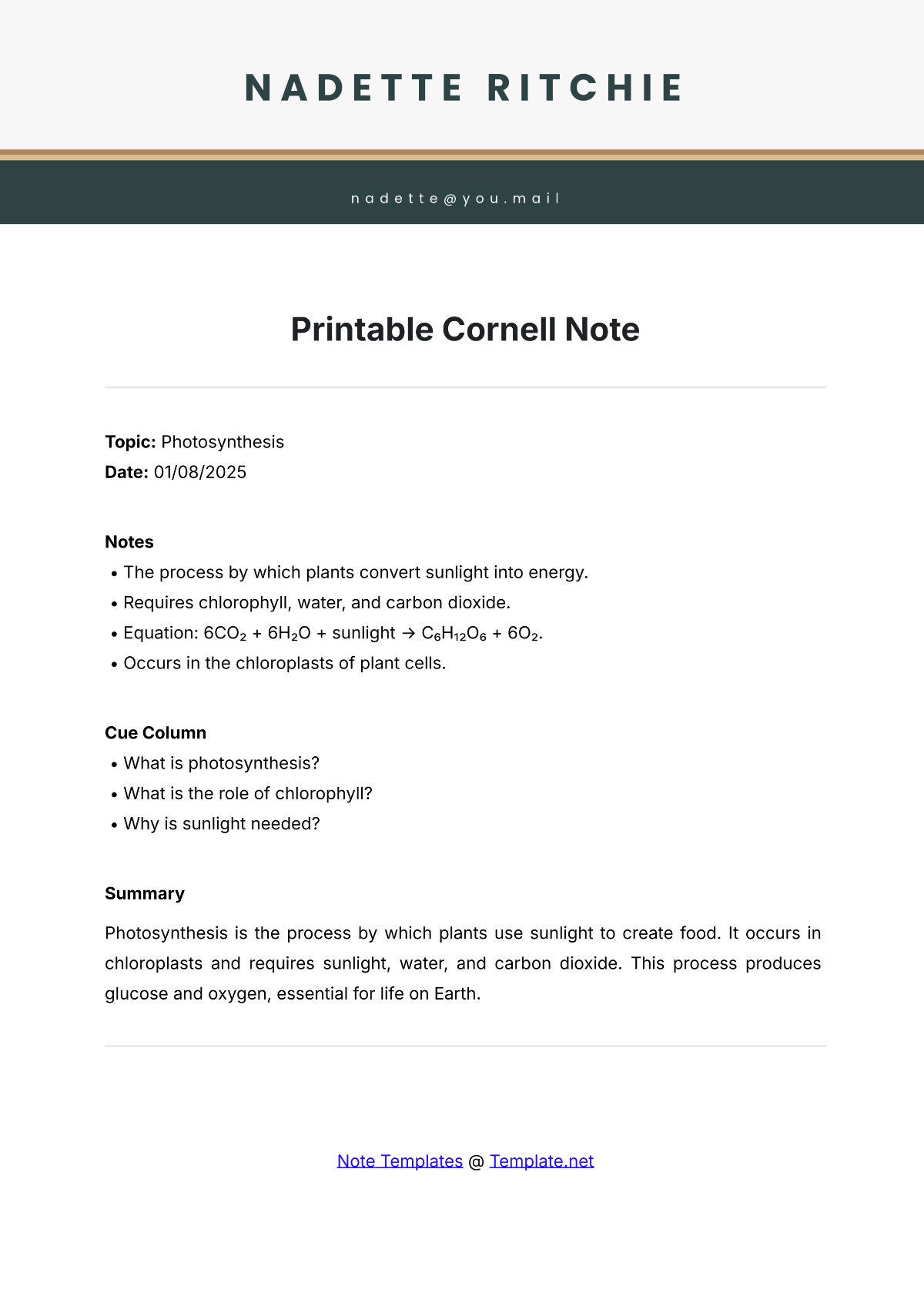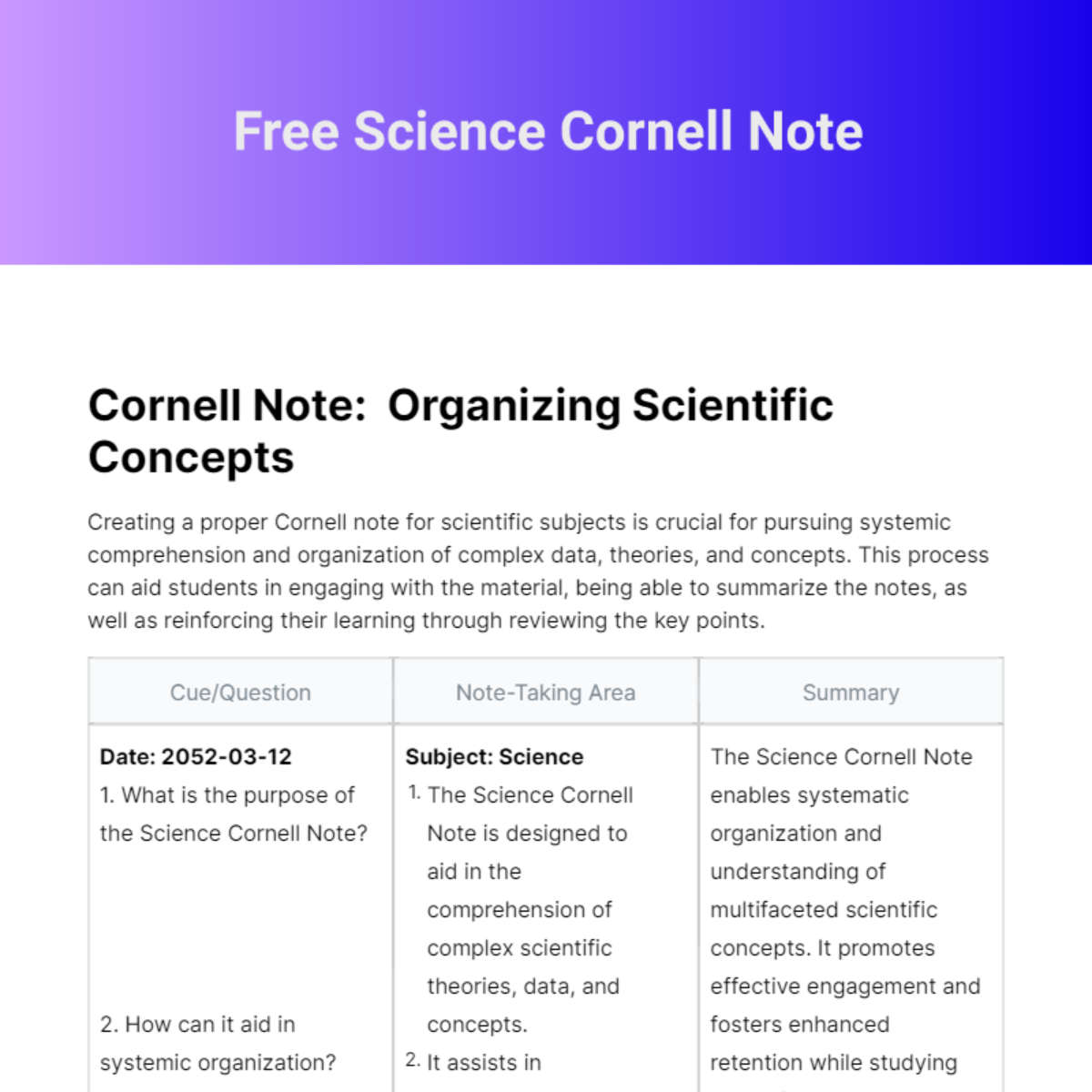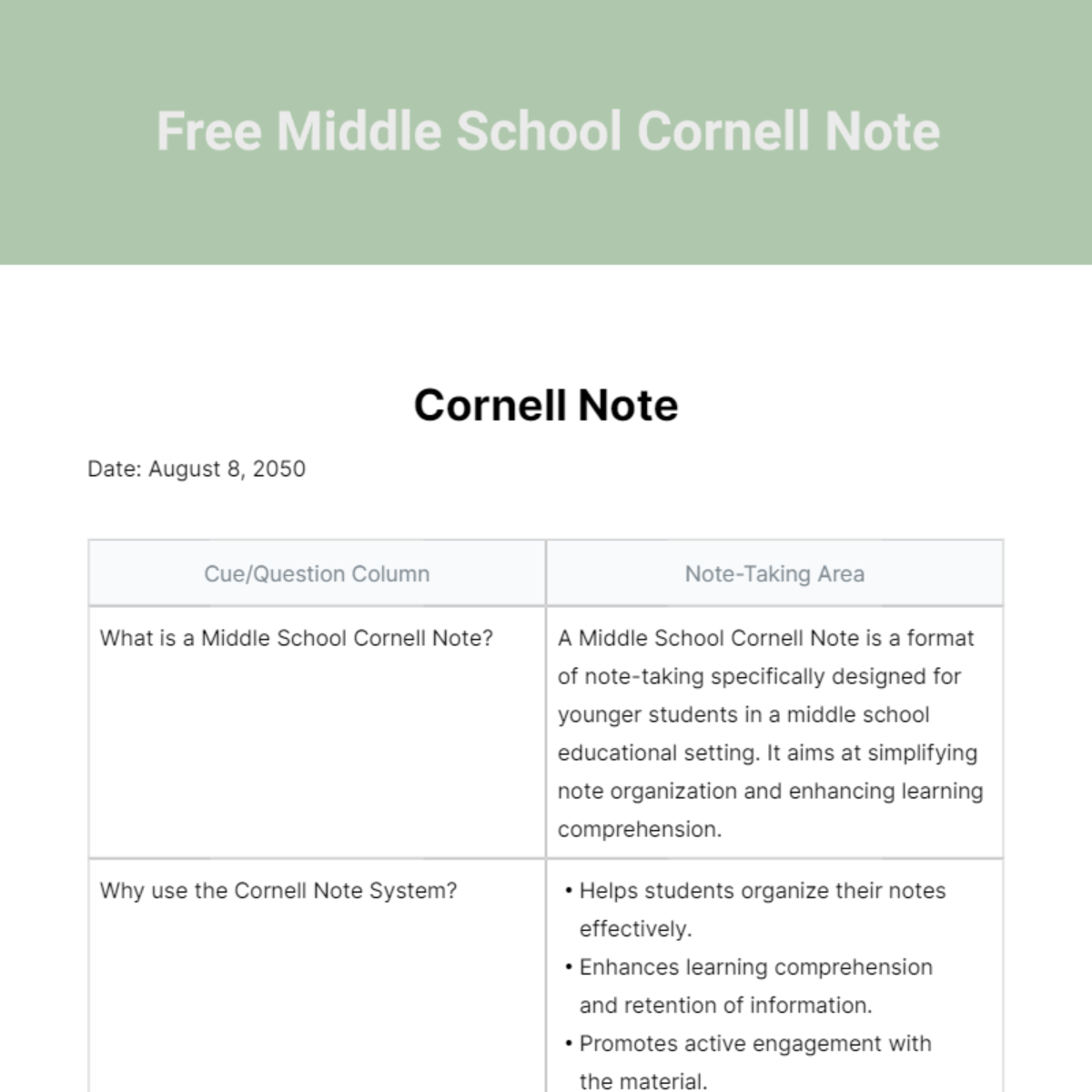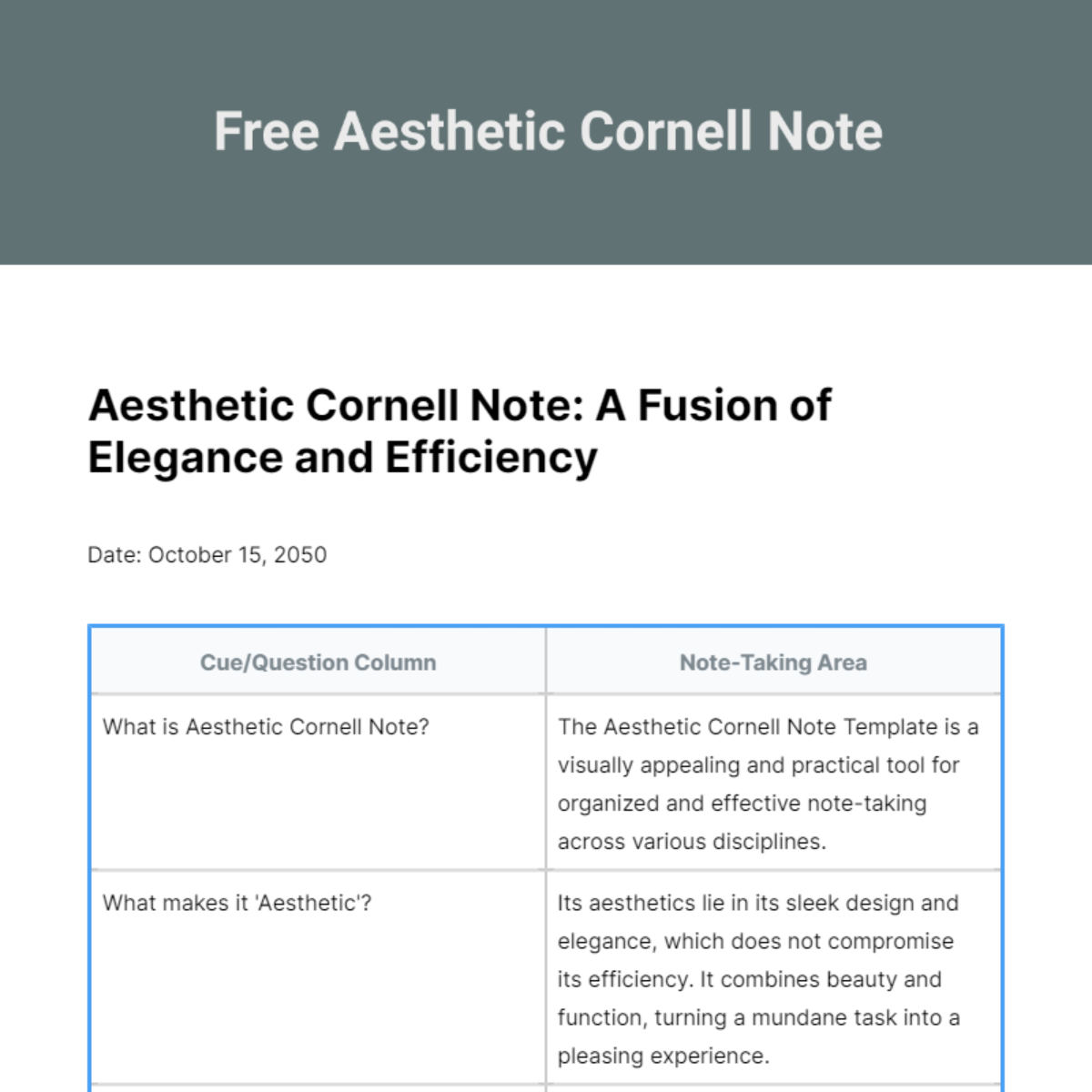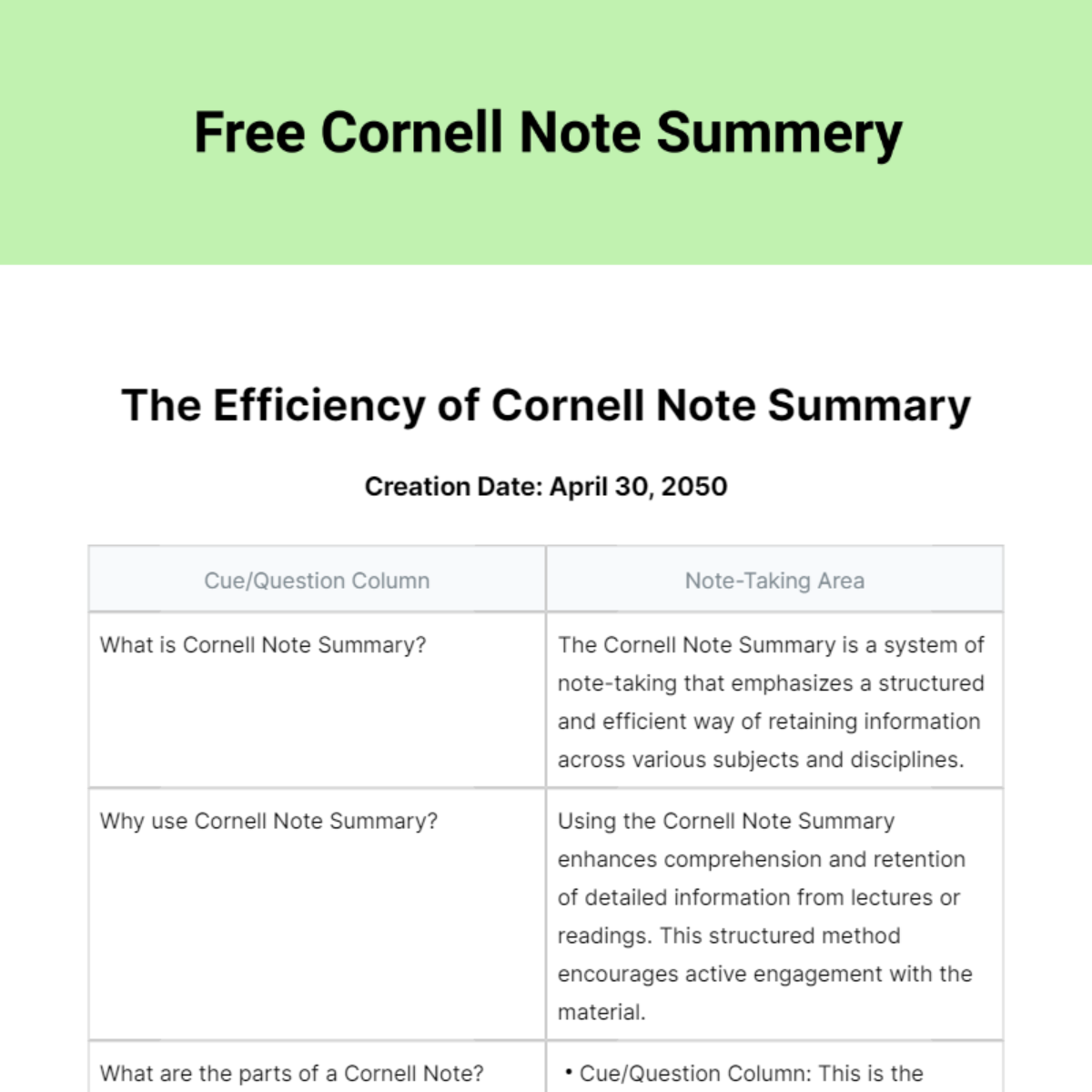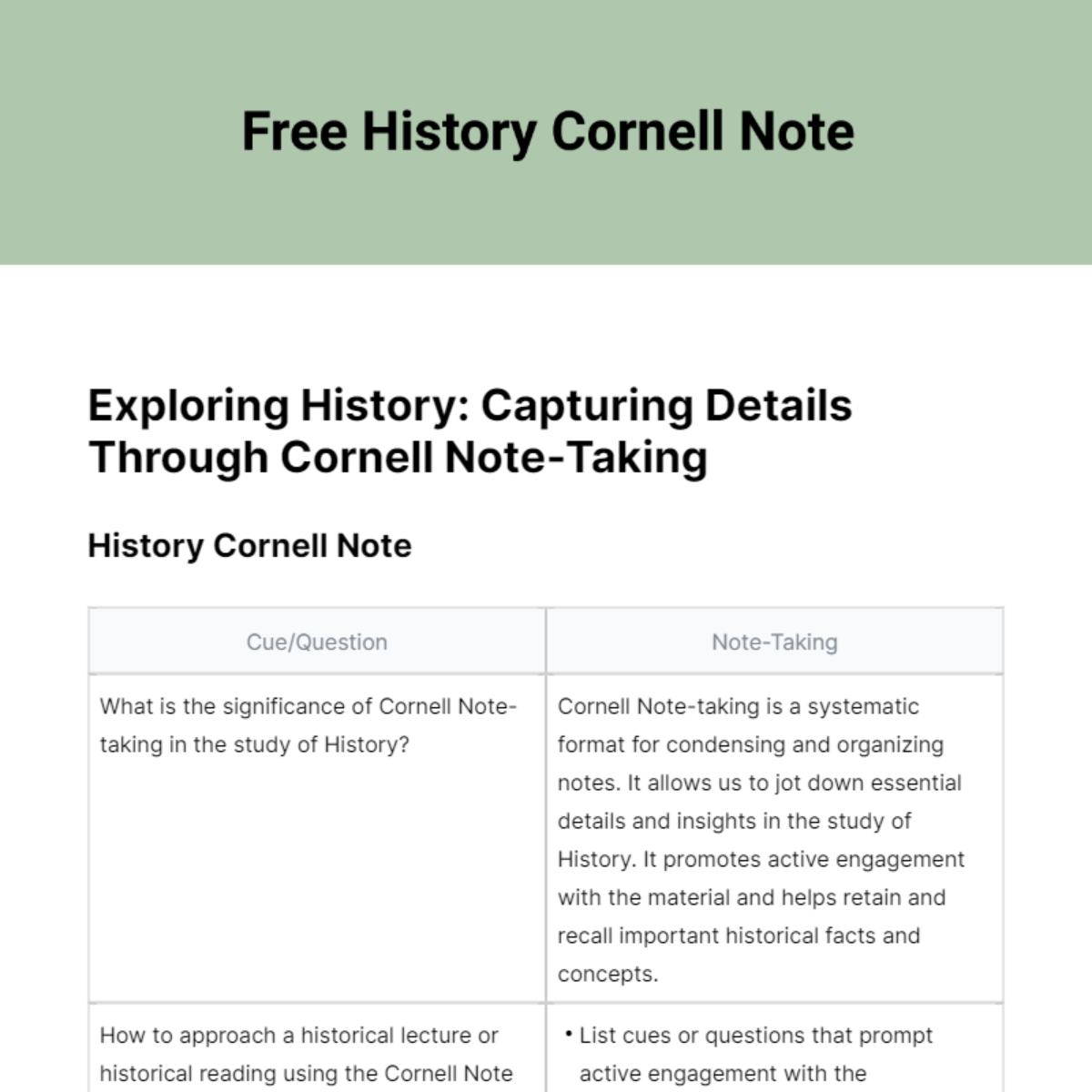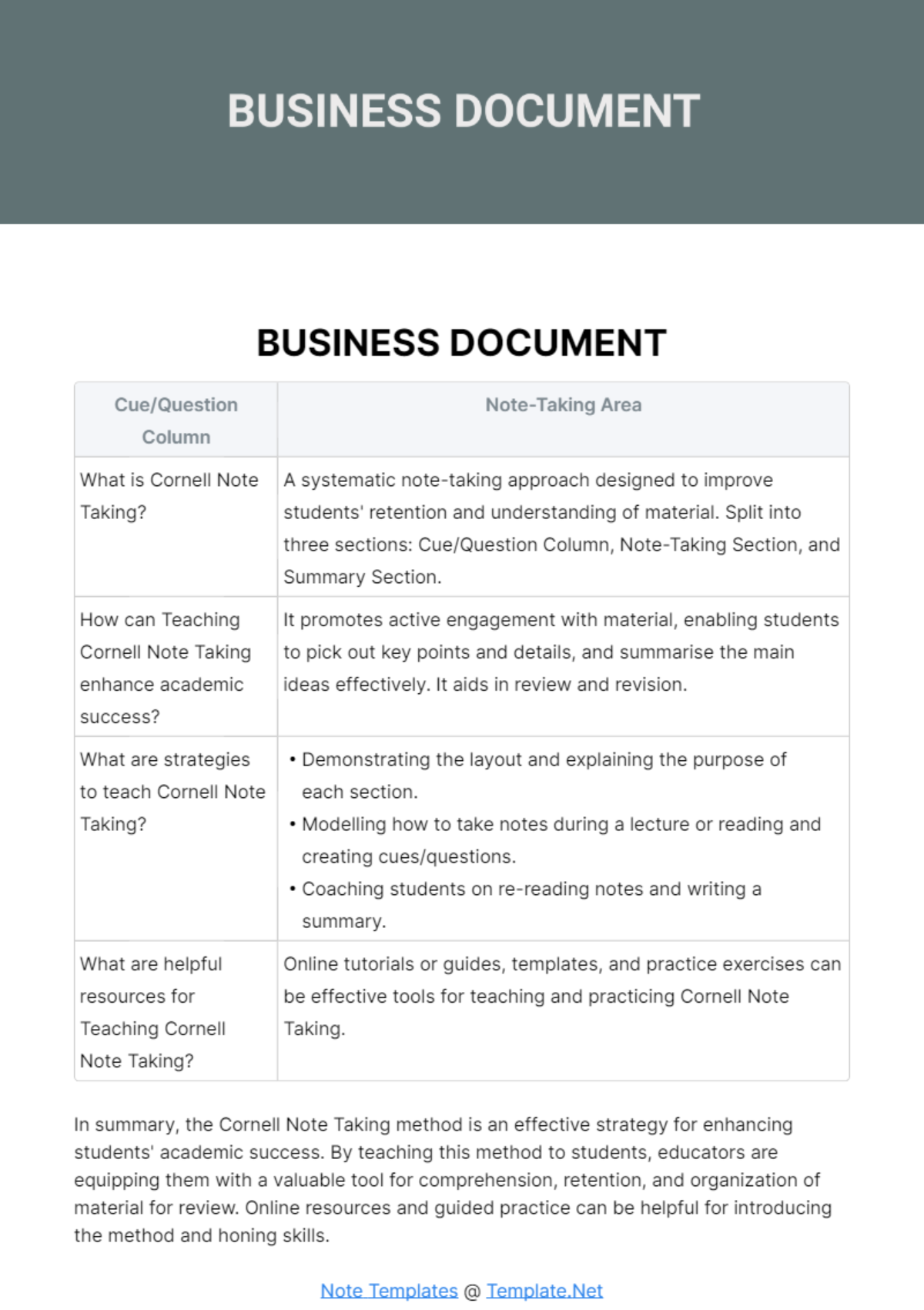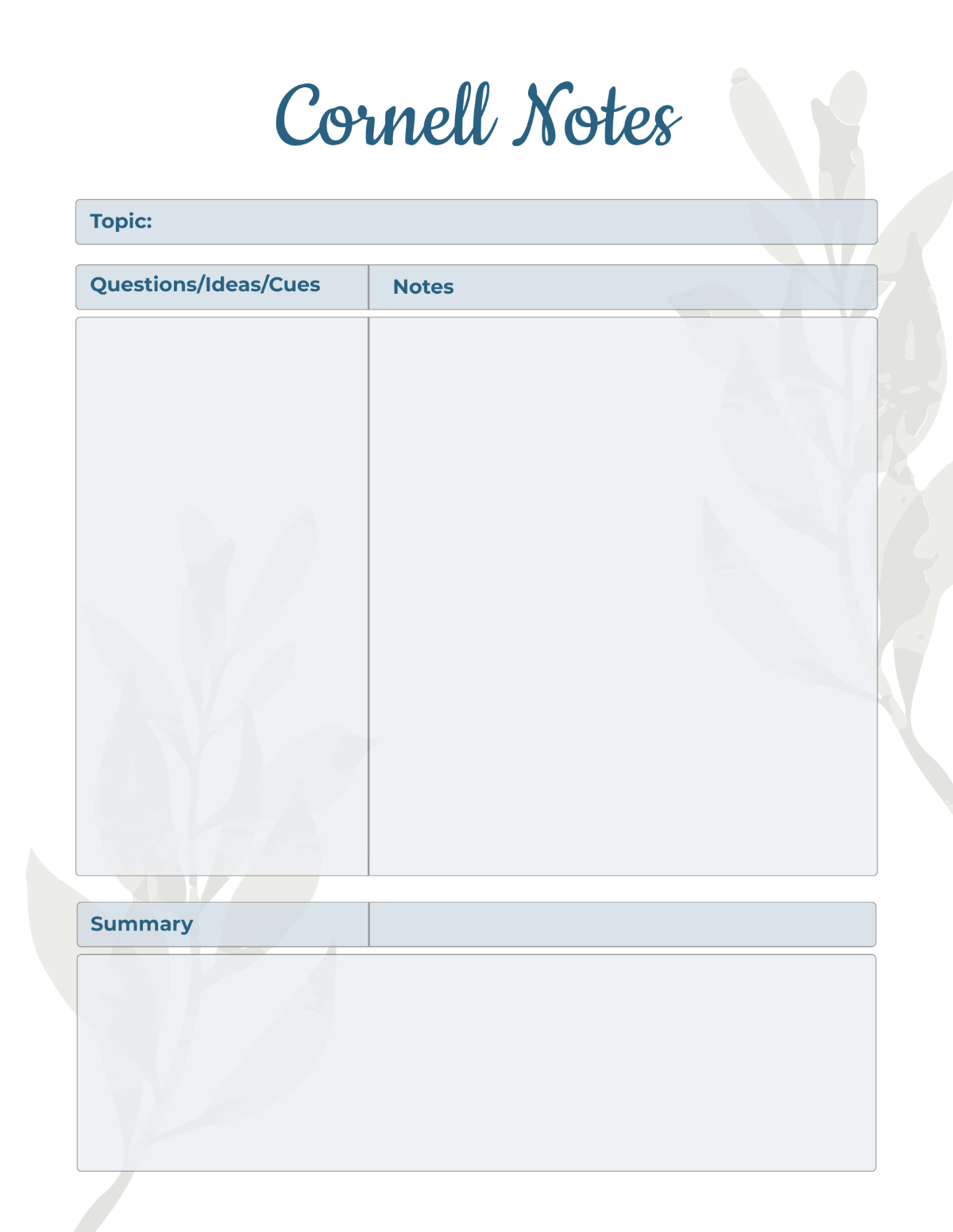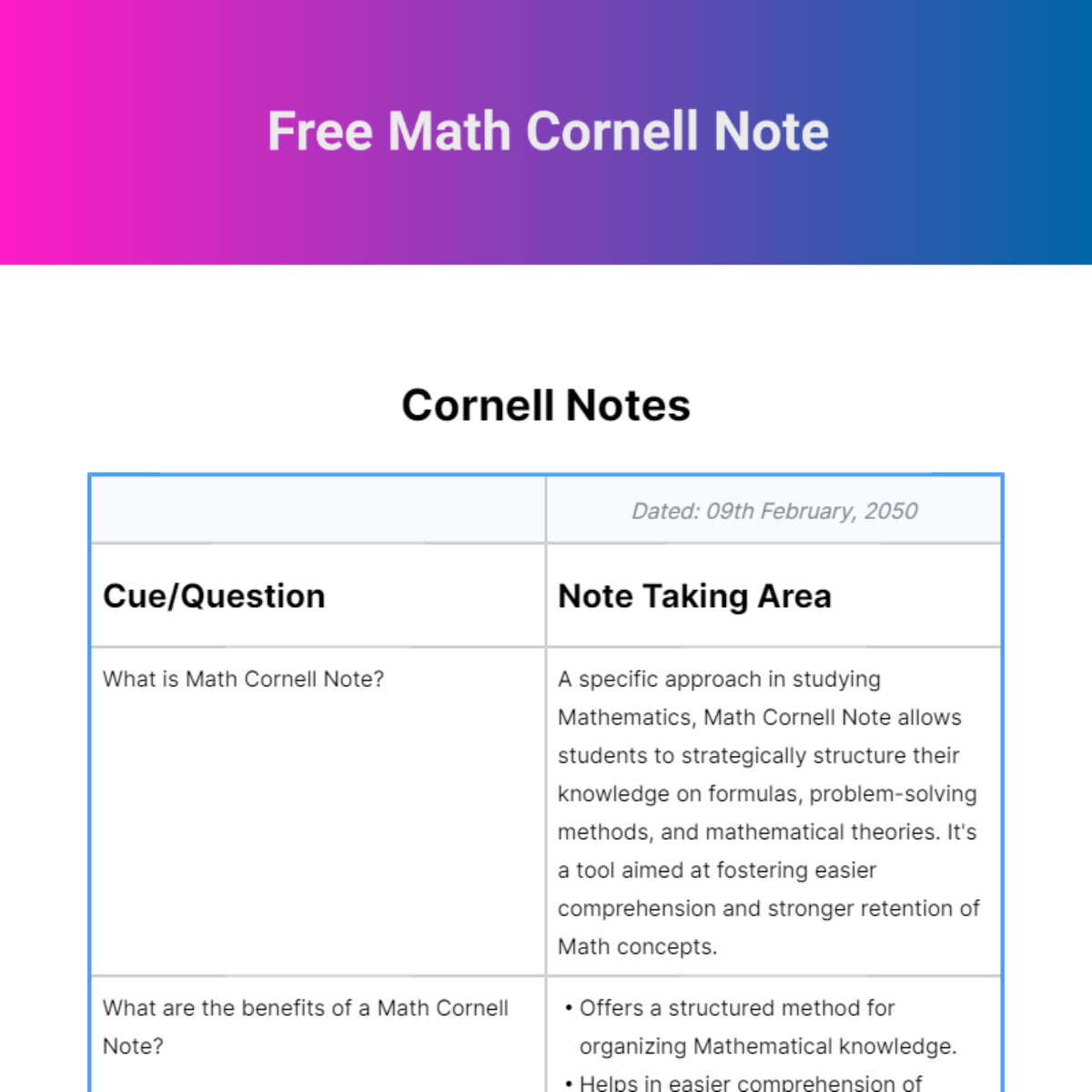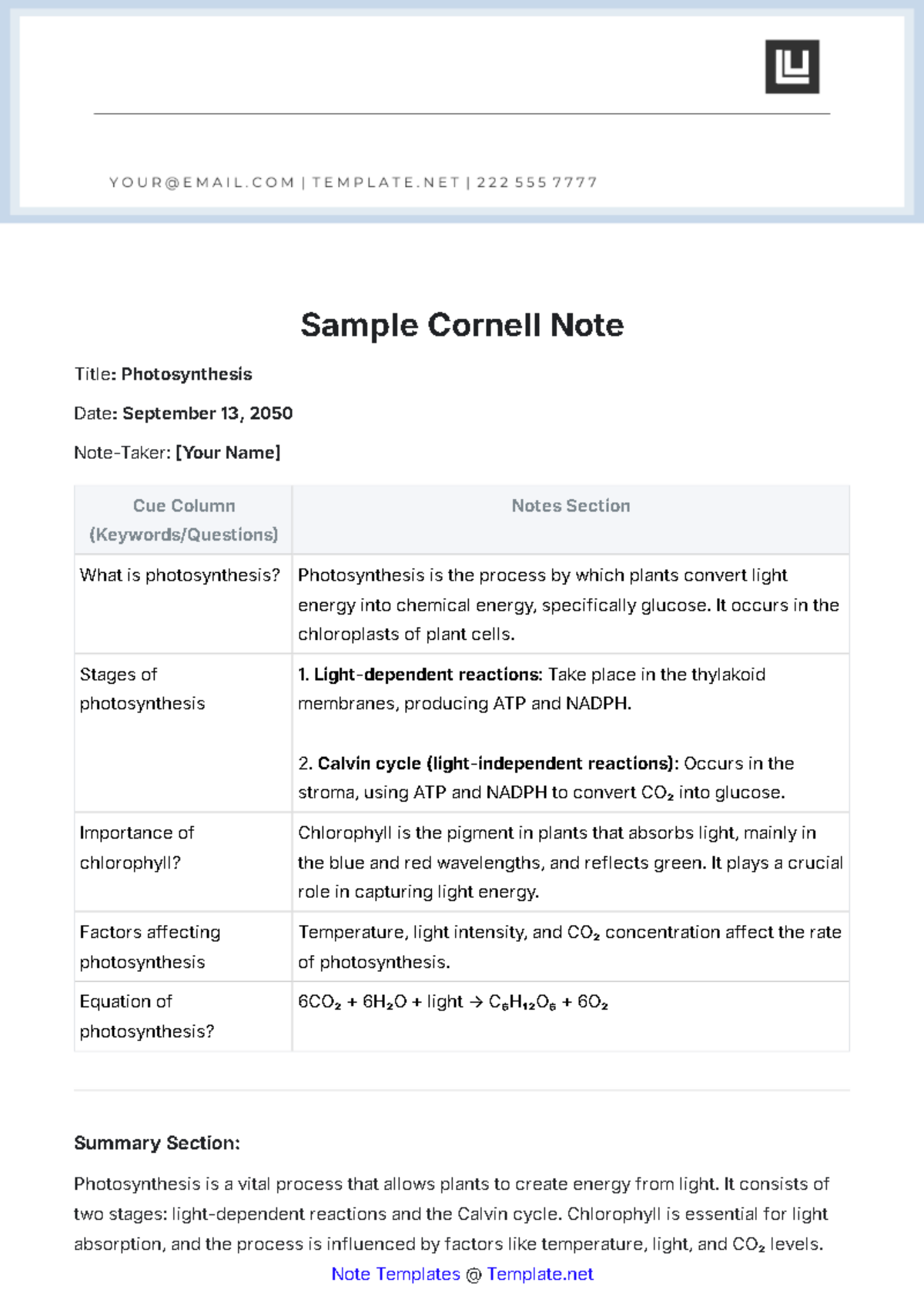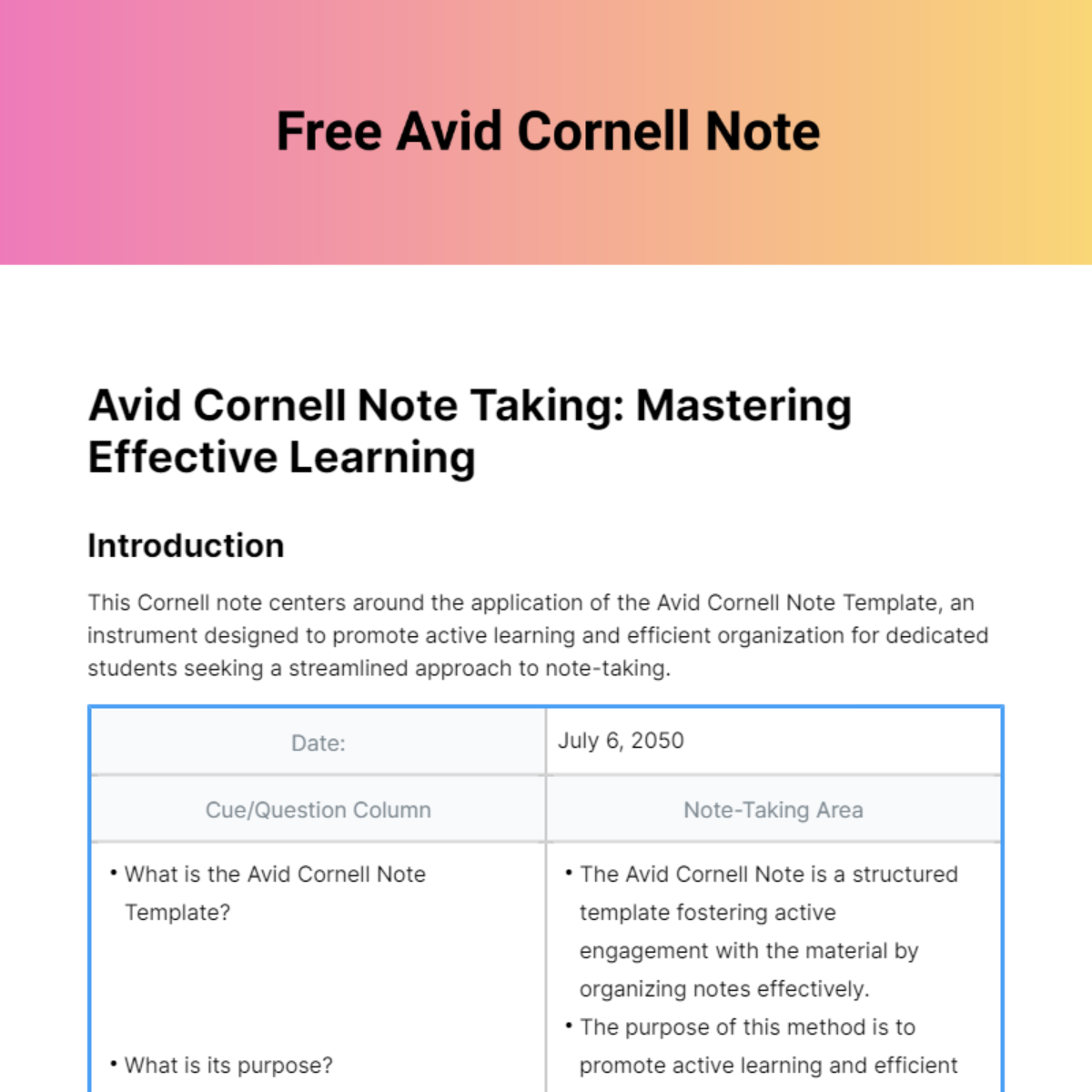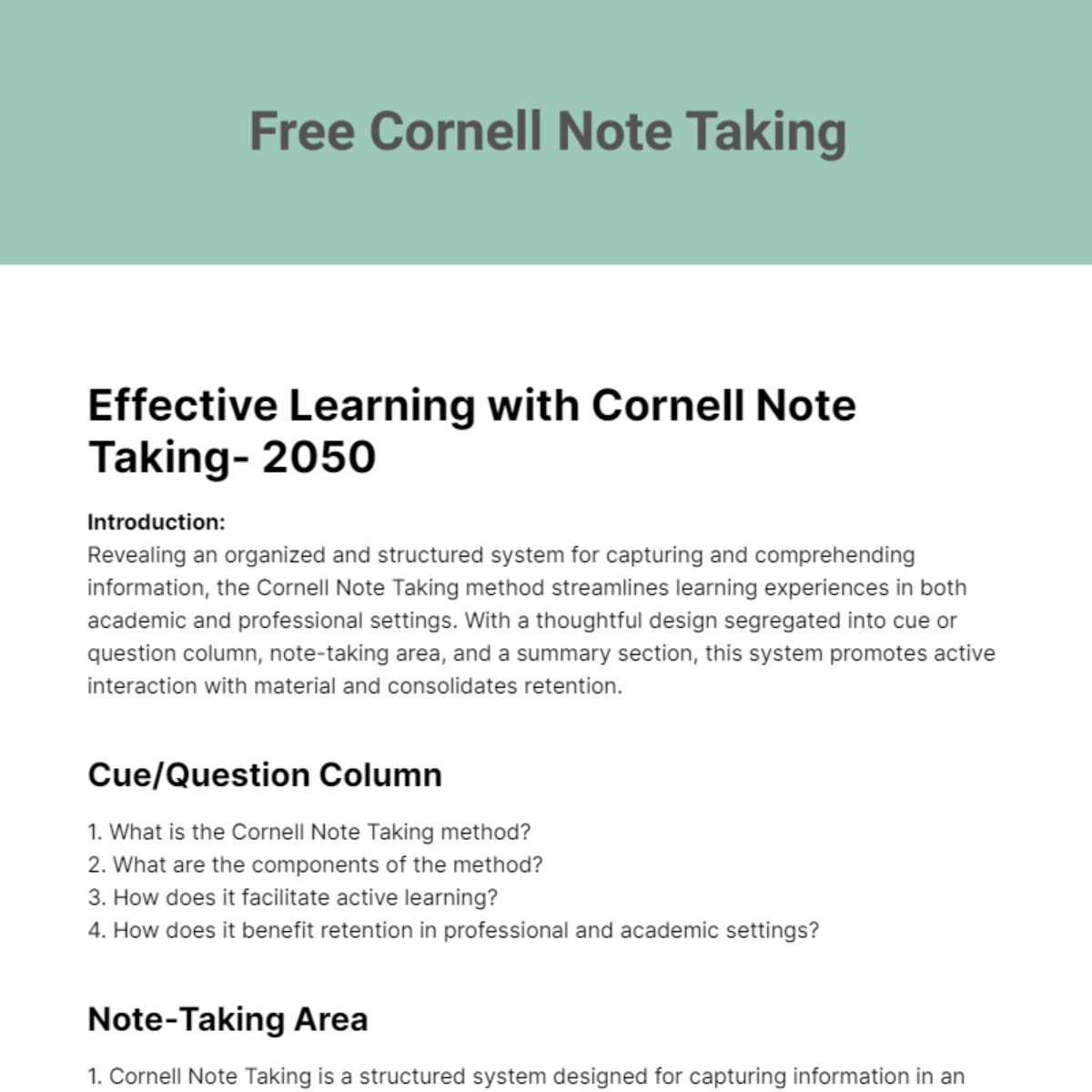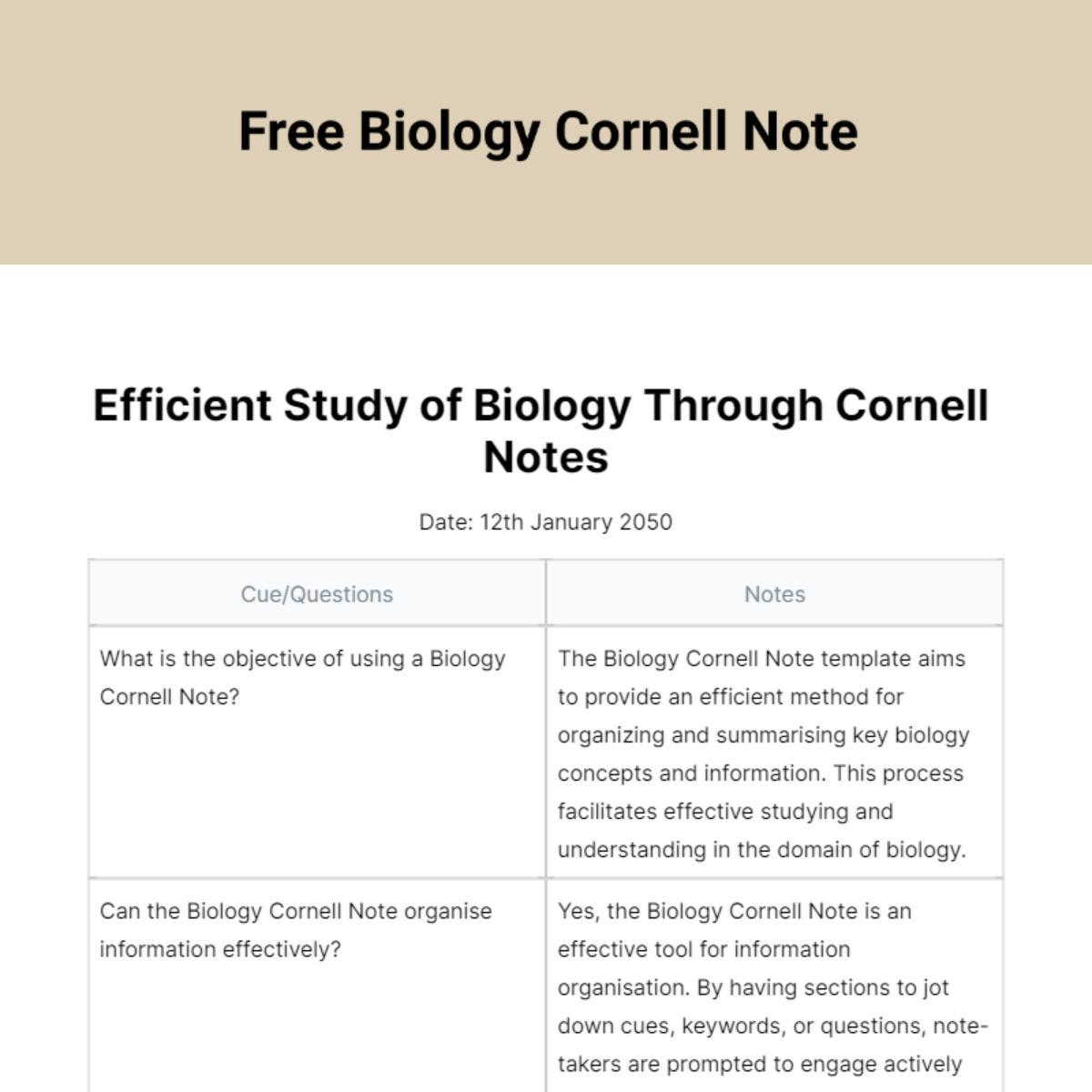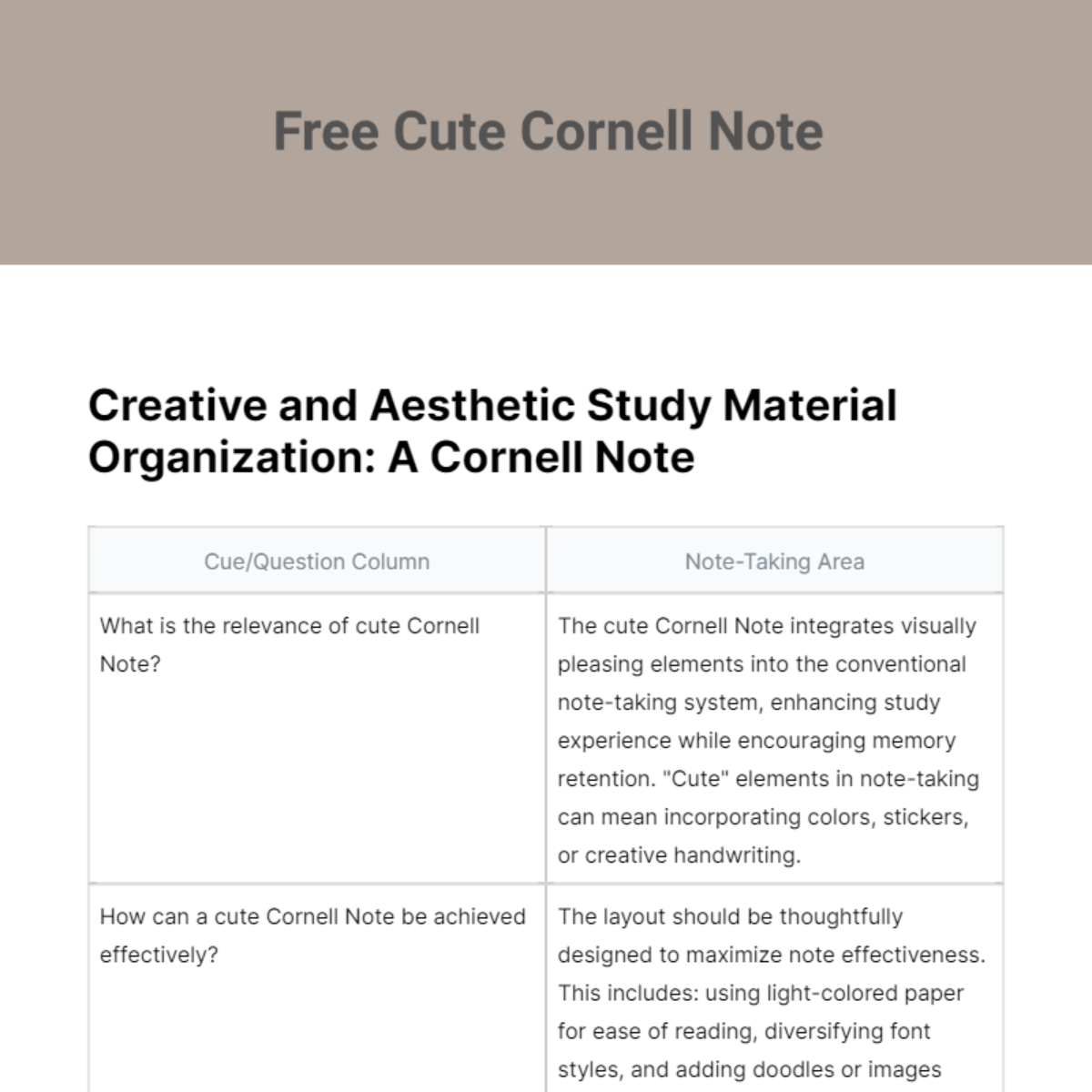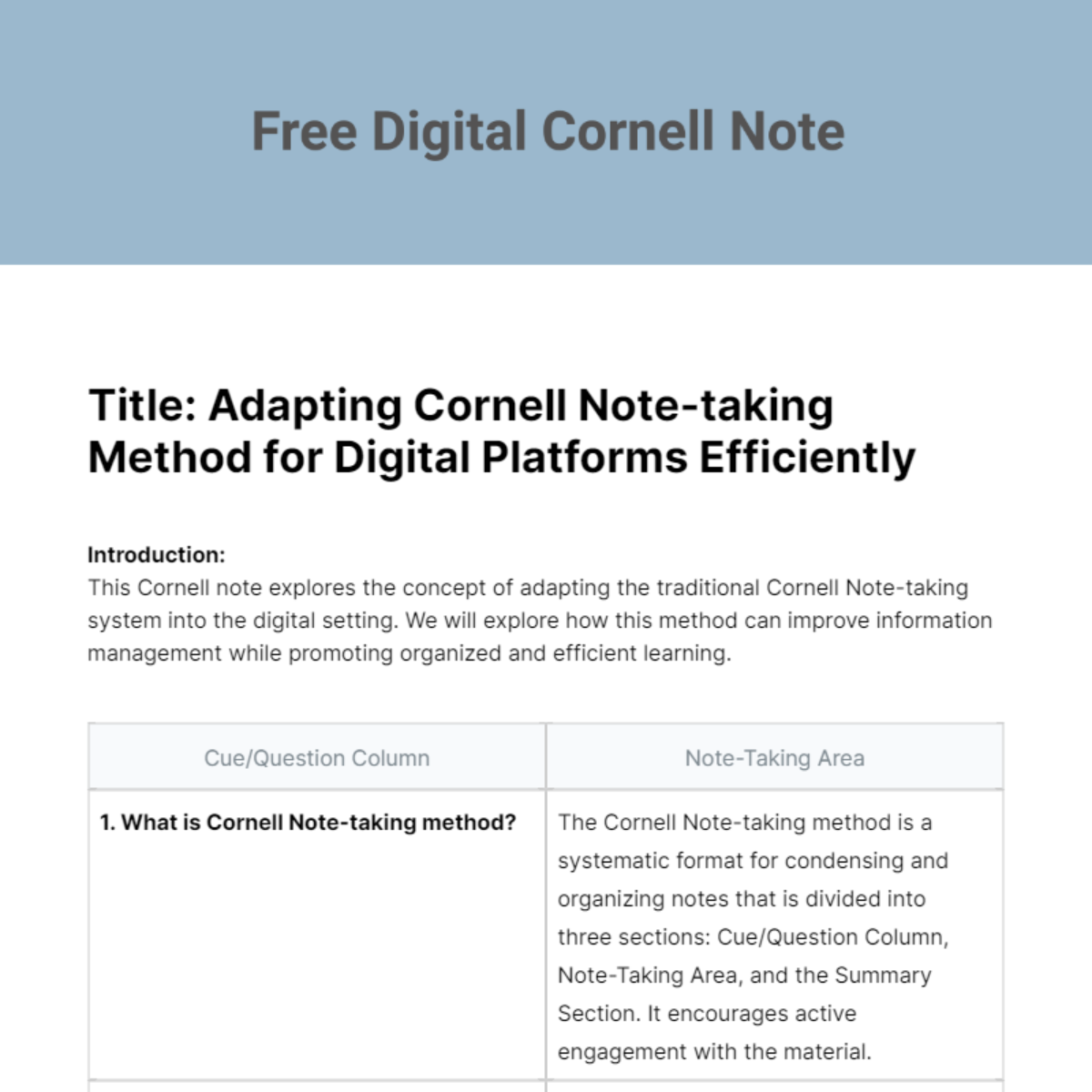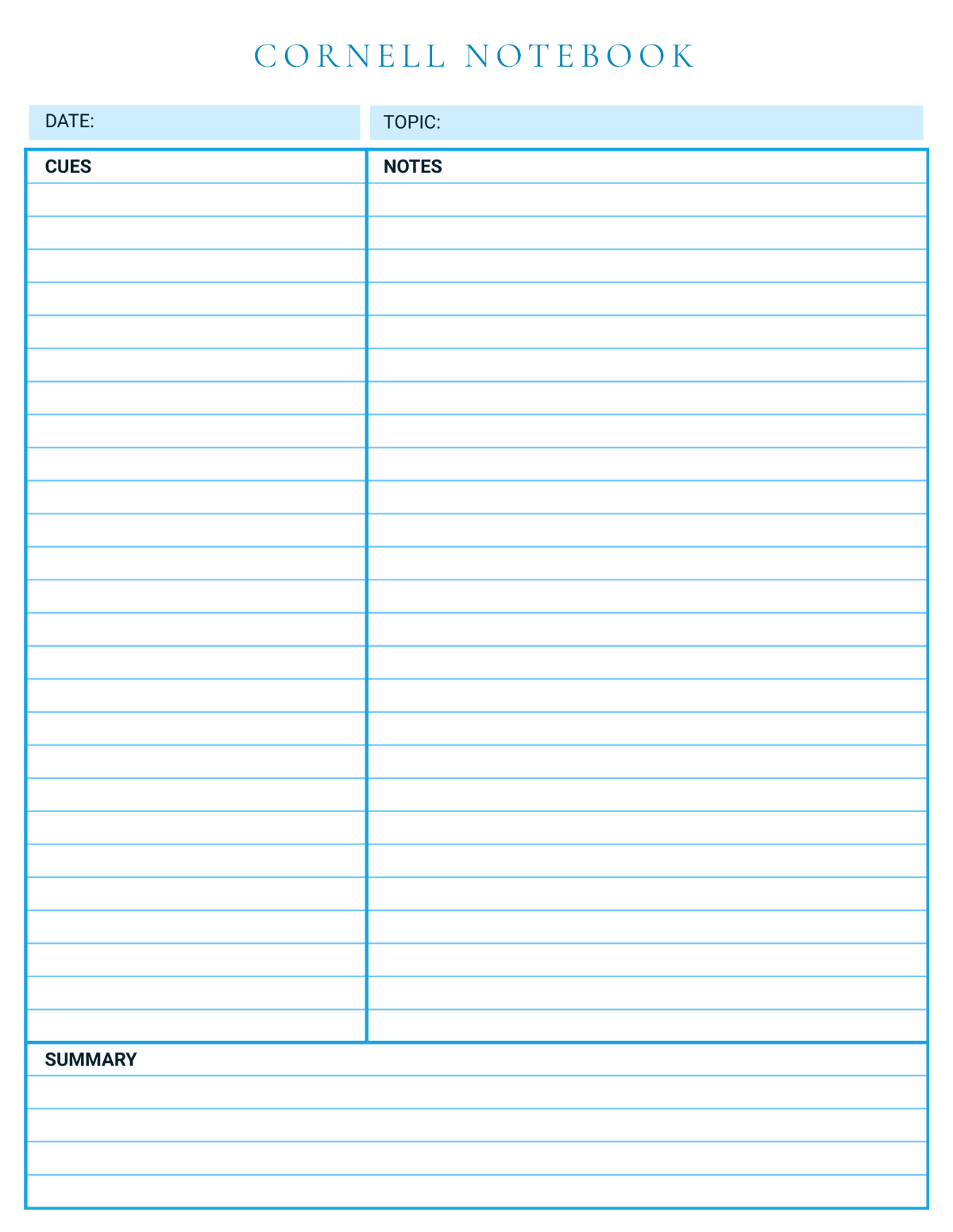Effective Learning with Cornell Note Taking- 2050
Introduction:
Revealing an organized and structured system for capturing and comprehending information, the Cornell Note Taking method streamlines learning experiences in both academic and professional settings. With a thoughtful design segregated into cue or question column, note-taking area, and a summary section, this system promotes active interaction with material and consolidates retention.
Cue/Question Column
1. What is the Cornell Note Taking method?
2. What are the components of the method?
3. How does it facilitate active learning?
4. How does it benefit retention in professional and academic settings?
Note-Taking Area
1. Cornell Note Taking is a structured system designed for capturing information in an organized manner.
2. It is divided into three main sections: Cue/Question Column, Note-Taking Area, and Summary Section.
3. Cue/Question Column is used for noting cues, essential keywords, or pertinent questions promoting active material engagement.
4. The main notes are taken within the Note-Taking Area, which contains key aspects, explanations, and details.
5. The Summary Section at the bottom allows for synthesizing the main points covered, making for a conducive review and learning reinforcement experience.
Summary Section
The Cornell Note Taking method offers a structured approach to capturing, organizing, and understanding notes. With its three distinctive components – the cue/question column, the note-taking area, and the summary section, this method fosters active engagement with the learning material and facilitates effective review and reinforcement of knowledge, making it a fantastic tool in academic and professional settings.
